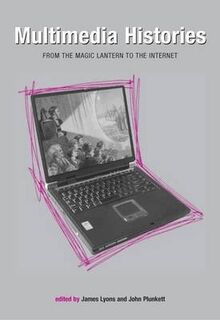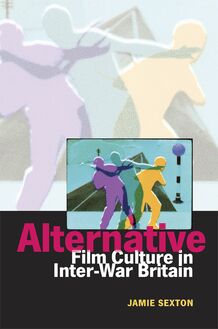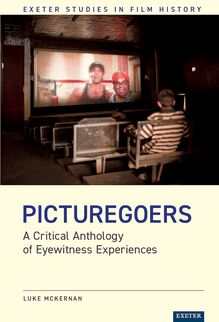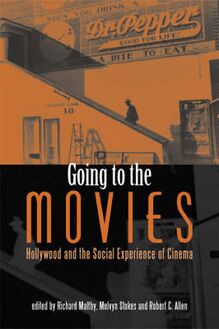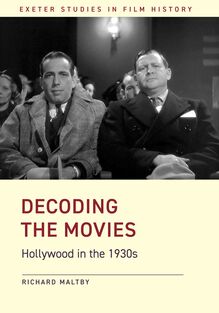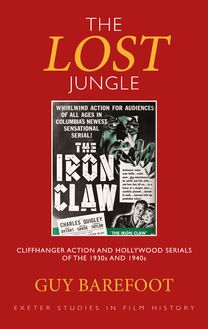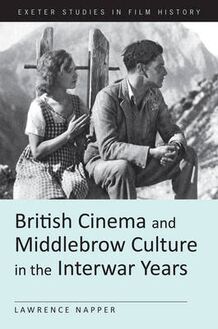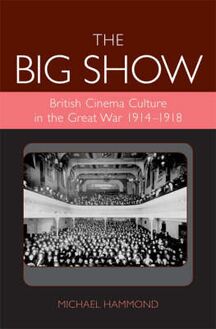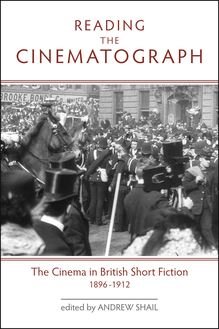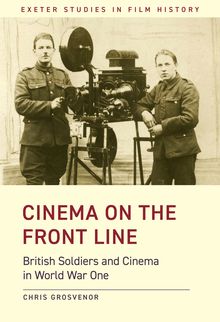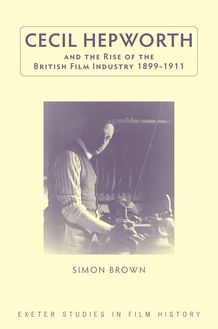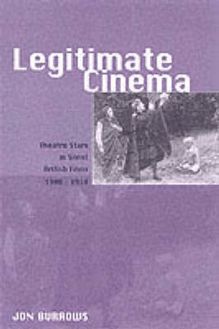-
 Univers
Univers
-
 Ebooks
Ebooks
-
 Livres audio
Livres audio
-
 Presse
Presse
-
 Podcasts
Podcasts
-
 BD
BD
-
 Documents
Documents
-
- Cours
- Révisions
- Ressources pédagogiques
- Sciences de l’éducation
- Manuels scolaires
- Langues
- Travaux de classe
- Annales de BEP
- Etudes supérieures
- Maternelle et primaire
- Fiches de lecture
- Orientation scolaire
- Méthodologie
- Corrigés de devoir
- Annales d’examens et concours
- Annales du bac
- Annales du brevet
- Rapports de stage
La lecture à portée de main
Vous pourrez modifier la taille du texte de cet ouvrage
Découvre YouScribe en t'inscrivant gratuitement
Je m'inscrisDécouvre YouScribe en t'inscrivant gratuitement
Je m'inscrisEn savoir plus
Vous pourrez modifier la taille du texte de cet ouvrage
En savoir plus

Description
The films made by the British Instructional Films (BIF) company in the decade following the end of the First World War helped to shape the way in which that war was remembered. This is both a work of cinema history and a study of the public’s memory of WW1.
By the early twenties, the British film industry was struggling to cope with the power of Hollywood and government help was needed to guarantee its survival. The 1927 Cinematograph Films Act was intended to support the domestic film industry by requiring British cinemas to show a quota of domestically produced films each year. The Act was not the sole saviour of British cinema, but the government intervention did allow the domestic industry to exploit the talents of an emerging group of younger filmmakers including Michael Balcon, Walter Summers and Alfred Hitchcock, who directed the most influential of these BIF war constructions.
This book shows that the films are micro-histories revealing huge amounts about perceptions of the Great War, national and imperial identities, the role of cinema as a shaper of attitudes and identities, power relations between Britain and the USA and the nature of popular culture as an international contest in its own right.
Introduction
Forging an Identity: The Battle of Jutland (1921) and Armageddon (1923)
Twisting the dragon’s tail: Zeebrugge (1924)
Filming the holy ground of British arms: Ypres (1925)
Retreating to Victory: Mons (1926)
Praising the not-so-silent service: The Battles of the Coronel and Falkland Islands (1927)
Epilogue and conclusion
Sujets
20th Century
Modern
HISTORY
Histoire
Película fotográfica
Canadá
Walter Summers
University of Exeter Press
World War I
Cinematograph Films Act 1927
Interwar period
Modern history
History of the British Isles
General officer
Ireland
History of Europe
Cinema of the United Kingdom
History of film
Documentary film
British Empire
Stephen Ireland
Great Britain
Michael Balcon
Canada
General
Australia
Obermodern-Zutzendorf
Film
Première Guerre mondiale
Europe
Alfred Hitchcock
Informations
| Publié par | University of Exeter Press |
| Date de parution | 31 juillet 2019 |
| Nombre de lectures | 0 |
| EAN13 | 9780859890823 |
| Langue | English |
| Poids de l'ouvrage | 1 Mo |
Informations légales : prix de location à la page 0,5625€. Cette information est donnée uniquement à titre indicatif conformément à la législation en vigueur.
Extrait
Celluloid War Memorials
Now almost completely unknown, British Instructional Films was an extremely influential film company of the 1920s; the company had a string of major box office successes across the British Empire in its series of Great War battle reconstructions. These films attempted to show the people of the Empire exactly what their soldiers and sailors had done on their behalf, and in doing so, they helped to shape the way in which the Great War was remembered.
Using thousands of sailors and soldiers and numerous ships lent by the army and navy, BIF Company was able to create epics which thrilled people whilst also making them consider the cost of the war. Such was the importance of these films that King George V made the first ever visit by a British monarch to a public cinema in order to see the 1924 film Zeebrugge .
In Celluloid War Memorials , Mark Connelly uses sources from archives in the UK, Australia, Canada, New Zealand, Belgium, Germany and France to produce the first full study of BIF Company’s battle reconstructions. He sets their films in the context of a public culture of war remembrance and commemoration in the 1920s and early 1930s.
Mark Connelly is Professor of Modern British History at the University of Kent. His main research interests are on the memory of war and the image of the armed forces in popular culture. His publications include The Great War: memory and ritual ; We Can Take It: Britain and the memory of the Second World War and Steady the Buffs! A Regiment, a Region and the Great War .
Exeter Studies in Film History
Published by University of Exeter Press in association with the Bill Douglas Centre for the History of Cinema and Popular Culture
Series Editors: Richard Maltby, Professor of Screen Studies, Flinders University, South Australia and Steve Neale, Professor of Film Studies and Academic Director of the Bill Douglas Centre, University of Exeter.
Parallel Tracks: The Railroad and Silent Cinema , Lynne Kirby (1997)
The World According to Hollywood, 1918–1939 , Ruth Vasey (1997)
‘Film Europe’ and ‘Film America’: Cinema, Commerce and Cultural Exchange 1920–1939 , edited by Andrew Higson and Richard Maltby (1999)
A Paul Rotha Reader , edited by Duncan Petrie and Robert Kruger (1999)
A Chorus of Raspberries: British Film Comedy 1929–1939 , David Sutton (2000)
The Great Art of Light and Shadow: Archaeology of the Cinema , Laurent Mannoni, translated by Richard Crangle (2000)
Popular Filmgoing in 1930s Britain: A Choice of Pleasures , John Sedgwick (2000)
Alternative Empires: European Modernist Cinemas and Cultures of Imperialism , Martin Stollery (2000)
Hollywood, Westerns and the 1930s: The Lost Trail , Peter Stanfield (2001)
Young and Innocent? The Cinema in Britain 1896–1930 , edited by Andrew Higson (2002)
Legitimate Cinema: Theatre Stars in Silent British Films 1908–1918 , Jon Burrows (2003)
The Big Show: British Cinema Culture in the Great War (1914–1918) , Michael Hammond (2006)
Multimedia Histories: From the Magic Lantern to the Internet , edited by James Lyons and John Plunkett (2007)
Going to the Movies: Hollywood and the Social Experience of Cinema , edited by Richard Maltby, Melvyn Stokes and Robert C. Allen (2007)
Alternative Film Culture in Inter-War Britain , Jamie Sexton (2008)
Marketing Modernity: Victorian Popular Shows and Early Cinema , Joe Kember (2009)
British Cinema and Middlebrow Culture in the Interwar Years , Lawrence Napper (2009)
Reading the Cinematograph: The Cinema in British Short Fiction 1896–1912 , edited by Andrew Shail (2010)
Charles Urban: Pioneering the Non-fiction Film in Britain and America, 1897–1925 , Luke McKernan (2013)
Cecil Hepworth and the Rise of the British Film Industry 1899–1911 Simon Brown (2016)
The Appreciation of Film: The Postwar Film Society Movement and Film Culture in Britain Richard Lowell MacDonald (2016)
UEP also publishes the celebrated five-volume series looking at the early years of English cinema, The Beginnings of the Cinema in England , by John Barnes.
First published in 2016 by University of Exeter Press Reed Hall, Streatham Drive Exeter EX4 4QR
UK www.exeterpress.co.uk
© Mark Connelly 2016
The right of Mark Connelly to be identified as author of this work has been asserted by him in accordance with the Copyright, Designs and Patents Act 1988.
Although every effort has been made to identify owners of copyright material, in some cases this has not been possible. Notification of omissions or incorrect information should be forwarded to the publishers, who will be pleased to amend any future editions of the book.
British Library Cataloguing in Publication Data A catalogue record for this book is available from the British Library.
ISBN 978 0 85989 998 7 Hardback
ISBN 978 0 85989 082 3 ePub
ISBN 978 0 85989 052 6 PDF
Typeset in Caslon by Kestrel Data, Exeter
Contents
Illustrations
Acknowledgements
Introduction
1 Forging an Identity: The Battle of Jutland (1921) and Armageddon (1923)
2 Twisting the Dragon’s Tail: Zeebrugge (1924)
3 Filming the Holy Ground of British Arms: Ypres (1925)
4 Retreating to Victory: Mons (1926)
5 Praising the Not-So-Silent Service: The Battles of Coronel and Falkland Islands (1927)
Epilogue and conclusion
Notes
Sources and Bibliography
Index
Illustrations
Front cover: Ypres Souvenir Brochure produced for premiere at Marble Arch Pavilion, 1927
Fig. 1 ‘Filming Jutland – after the event’, Illustrated London News , 4 September 1921
Fig. 2 Announcement of The Battle of Jutland trade show, Kinematograph Weekly , 1 September 1921
Fig. 3 Poster advertising release of Armageddon , Kinematograph Weekly , 8 November 1923
Fig. 4 Announcement of Armageddon premiere to the cinema trade, Kinematograph Weekly , 1 November 1923
Fig. 5 ‘The most inspiring British war film – the new "Zeebrugge"’, Illustrated London News , 18 October 1924
Fig. 6 The raiders advance up on to the Mole, Zeebrugge
Fig. 7 Canadian soldiers on Belle Vue Ridge, Ypres
Fig. 8 The Divisional Bathhouse, Ypres
Fig. 9 Advertisement for Ypres , Manitoba Free Press , 24 April 1926
Fig. 10 ‘A Great British War Film – the Retreat from Mons’, Illustrated London News , 25 September 1926
Fig. 11 Mons Souvenir Brochure produced for premiere at Marble Arch Pavilion, 1926
Fig. 12 ‘World’s greatest war picture coming to Dundee’, Evening Telegraph , 12 November 1926
Fig. 13 . Advertisement for The Battles of Coronel and Falkland Islands, Daily Film Renter , 12 September 1927
Fig. 14 Walter Summers and crew filming muster of Falkland Islands Defence Force, Stanley Green. Shot on location in Scilly Isles. Courtesy of Roger Banfield of the Isles of Scilly Museum
Fig. 15 Walter Summers and crew filming Falkland Islands Defence Force running to their posts. Shot on location in Scilly Isles. Courtesy of Roger Banfield of the Isles of Scilly Museum
Fig. 16 Die Seeschlachten bei Coronel und den Falklandsinseln , Illustrieter Film-Kurier , August 1928
Fig. 17 Tell England . HMS Queen Elizabeth and boats preparing for the assault. Production still taken on location in Malta.
Fig. 18 Tell England . Machine gunners providing covering fire over assault barges. Production still taken on location in Malta
Fig. 19 Tell England . Assault barges closing in on beach covered by artillery fire. Production still taken on location in Malta
Acknowledgements
This book owes a great deal to a wide range of people who provided inspiration, help and support throughout the research and writing process. First and foremost I must thank my wife and children for once again allowing dad to indulge in yet another Great War obsession. Much thanks are also due to Bryony Dixon and Upekha Bandaranayake of the British Film Institute for inviting me to play a role in The Battles of Coronel and Falkland Islands restoration project. It was great fun and also helped me sharpen my thoughts about the film enormously. I would also like to thank Ian Beckett, Tim Bowman, Helen Brooks, Will Butler, James Chapman, Quintin Colville, Zoe Denness, Dominiek Dendooven, Leen Engelen, Mark Glancy, Mike Hammond, Emma Hanna, Nick Hiley, Laurence Napper, Rebecca Nash, Bill Nasson, Jeffrey Richards and Adrian Smith all of whom helped this project reach its conclusion. I would particularly like to express my gratitude to my colleague, Dr Stefan Goebel, who took a deep interest in this project, passed on relevant material found during the course of his own research, and read the manuscript thoroughly, making many valuable suggestions.
This book is dedicated to Professor John Ramsden (1947–2009) Great British Historian.
Introduction
This book is about a British film company founded by an officer with Western Front experience, H.B. Woolfe, which grew from very humble beginnings in an old army hut at Elstree to become a highly effective producer of war films. Achieving great success across the British Empire and further afield, British Instructional Films Company (hereafter BIF Company) contributed to a wider public debate about the meaning of the Great War and the way it should be understood and remembered. As many cultural historians have shown, the Great War and in particular its dead, formed a dominant part of British and imperial public discourse and popular culture in the 1920s. This study will show that BIF Company’s output stood in a memorial landscape sharing much with the other signs and manifestations of the Great War’s cultural imprint on 1920s culture. Second, it will demonstrate how the memory of the Great War became a contested zone in which the particular target was not a former enemy but an ally, the USA. Many felt Hollywood was deliberately trying to persuade the world that the USA had fought the war pretty much alone and was thus stealing laurels that rightly belonged to Britain and its Empire. Within this facet is the important aspect of imperial culture and loya
-
 Univers
Univers
-
 Ebooks
Ebooks
-
 Livres audio
Livres audio
-
 Presse
Presse
-
 Podcasts
Podcasts
-
 BD
BD
-
 Documents
Documents
-
Jeunesse
-
Littérature
-
Ressources professionnelles
-
Santé et bien-être
-
Savoirs
-
Education
-
Loisirs et hobbies
-
Art, musique et cinéma
-
Actualité et débat de société
-
Jeunesse
-
Littérature
-
Ressources professionnelles
-
Santé et bien-être
-
Savoirs
-
Education
-
Loisirs et hobbies
-
Art, musique et cinéma
-
Actualité et débat de société
-
Actualités
-
Lifestyle
-
Presse jeunesse
-
Presse professionnelle
-
Pratique
-
Presse sportive
-
Presse internationale
-
Culture & Médias
-
Action et Aventures
-
Science-fiction et Fantasy
-
Société
-
Jeunesse
-
Littérature
-
Ressources professionnelles
-
Santé et bien-être
-
Savoirs
-
Education
-
Loisirs et hobbies
-
Art, musique et cinéma
-
Actualité et débat de société
- Cours
- Révisions
- Ressources pédagogiques
- Sciences de l’éducation
- Manuels scolaires
- Langues
- Travaux de classe
- Annales de BEP
- Etudes supérieures
- Maternelle et primaire
- Fiches de lecture
- Orientation scolaire
- Méthodologie
- Corrigés de devoir
- Annales d’examens et concours
- Annales du bac
- Annales du brevet
- Rapports de stage
